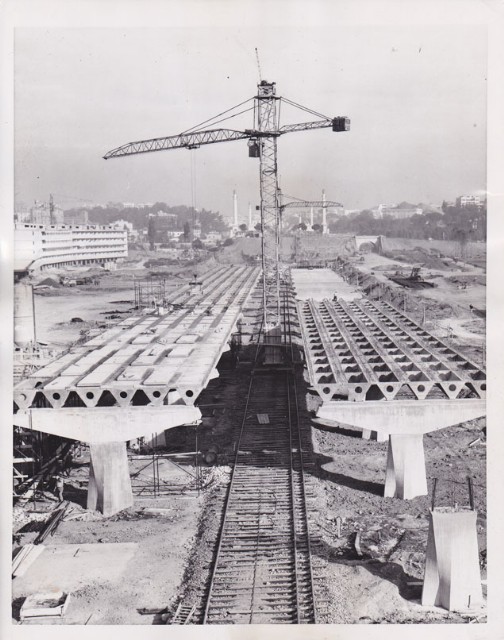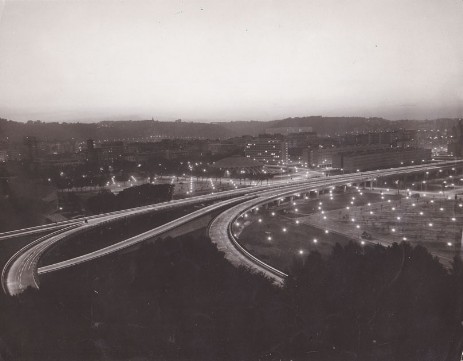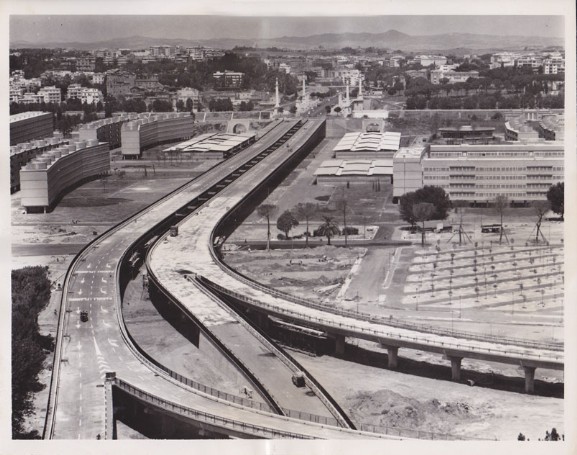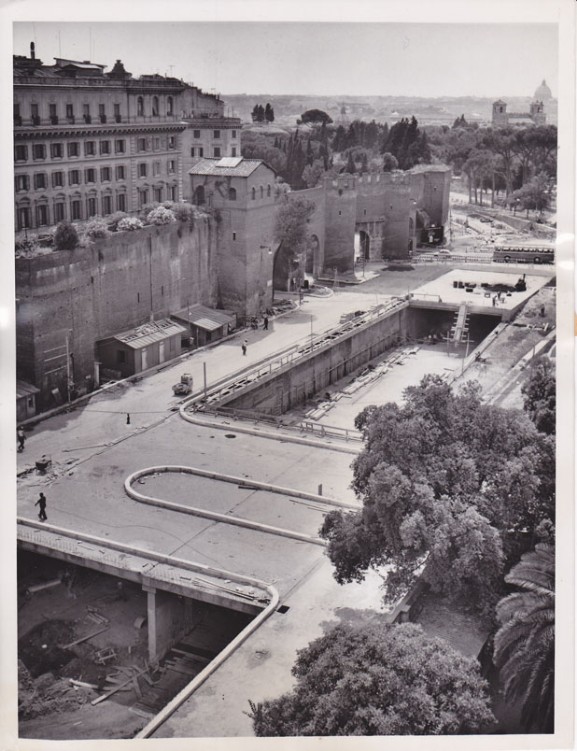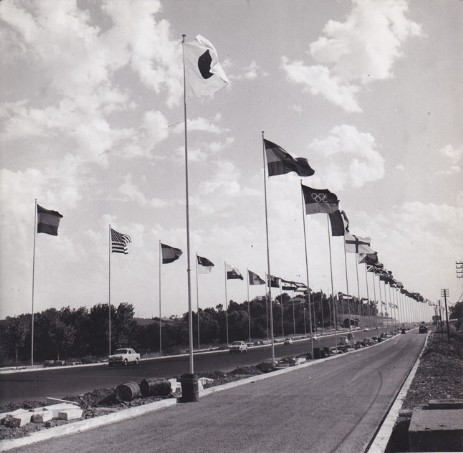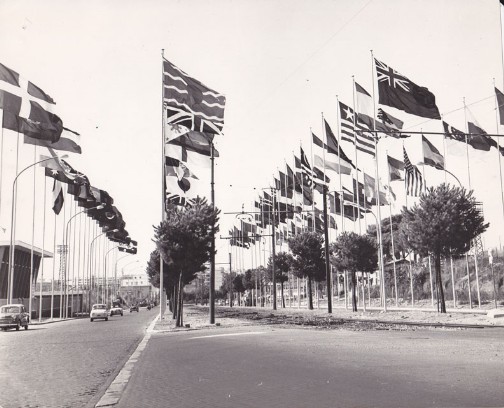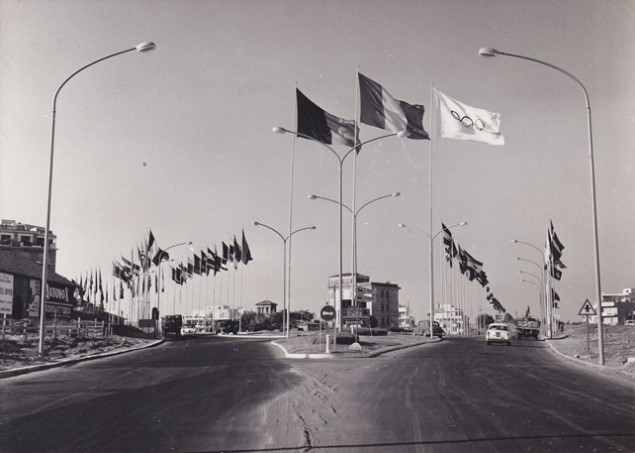Le strade di Roma
Le Olimpiadi di Roma 1960 sono uno spartiacque nella storia della Capitale sul piano urbanistico. Per trasformare la città bastarono 5 anni: i Giochi erano stati assegnati nel 1955 e Roma aveva battuto Losanna nell´ultimo ballottaggio. L’Italia sta entrando nel boom economico. Nascono nuovi quartieri, nuove strade, si moltiplicano le autovetture. A Roma nel 1955 il Presidente della Repubblica Luigi Einaudi inaugura la metropolitana. Viene completato il quartiere dell’Eur, che, dopo il prolungamento della via Cristoforo Colombo, vede nascere la Fiera, il laghetto ed il “fungo“. Sulle pendici di Monte Mario viene edificato l’Hotel Hilton. Roma modifica radicalmente la viabilità: il tram viene praticamente abolito. Sono costruite nuove arterie come la Via Olimpica e Corso Francia, disegnato dall’Architetto Pierluigi Nervi, che passa sopra il villaggio olimpico. Poco prima dell’inizio delle Olimpiadi viene aperto lo scalo aereo di Fiumicino.
The 1960 Rome Olympics are a watershed in the history of the capital in terms of urban planning. It took only five years to transform the city: the Games had been awarded in 1955 and Rome had beaten Lausanne in the last ballot. Italy was entering an economic boom. New neighbourhoods, new streets and more and more cars were being built. In 1955, the President of the Republic, Luigi Einaudi, inaugurated the underground railway in Rome. The Eur district was completed and, after the extension of Via Cristoforo Colombo, the Fiera, the lake and the 'fungo' were built. The Hilton Hotel was built on the slopes of Monte Mario. Rome radically changed its road system: the tram was practically abolished. New roads were built, such as Via Olimpica and Corso Francia, designed by architect Pierluigi Nervi, which passed over the Olympic village. Shortly before the start of the Olympics, Fiumicino Airport was opened.
View of the new elevated road under construction in Rome, which will lead to the new stadium that will host the 1960 Olympics.
Tra le varie infrastrutture che fu necessario costruire da zero, ci fu, ad esempio, la via Olimpica: una sorta di circonvallazione che collegava tra loro alcuni dei principali impianti sportivi ed il villaggio degli atleti.
